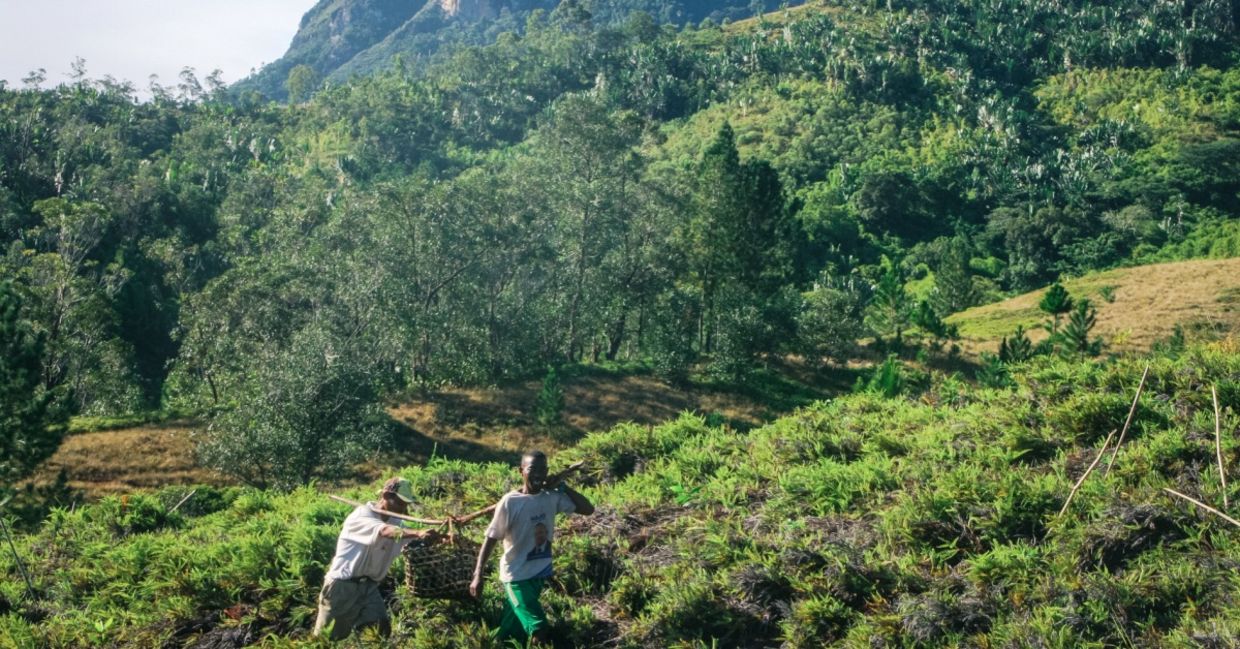
(Kelsie DiPerna / Shutterstock.com)
With a vision as lofty as the trees it seeks to plant, Africa’s Trees for the Future (TREES) foundation has big plans for the world’s second biggest continent. The Guardian explains TREES imagines one billion new trees and 230,000 jobs over the next decade, transforming the semi-barren areas of the Sahel to a vibrant and productive agricultural region.
The Great Green Wall
TREES isn’t the first organization to attempt to rejuvenate the savannahs that lie south of the Sahara desert. Mongabay reports on the African Union’s Great Green Wall initiative.
The Great Green Wall was first proposed in 2007 to prevent the Sahara desert’s slow creep southward. The Great Green Wall intends to abut the Sahara, with a line of greenery, stretching for 5,000 miles from Senegal on Africa’s West Coast, all the way to Djibouti, located on the horn of Africa.
This is an extremely ambitious plan, The Guardian explains that, if successful, it will be the planet’s biggest natural structure. However, Mongabay reports, little work has been done on the Great Green Wall thus far due to a number of challenges including irrigation, resources, and lack of motivation.
And the Great Green Wall isn’t the only initiative to make and then fall short of big promises. A 2019 study optimistically suggested that a trillion trees planted could massively increase tree cover in the Sahel, until it was later uncovered that there wasn’t enough land for this scale of planting, The Guardian shares.
And, in Kenya, despite more than three decades of government-funded tree-planting attempts, deforestation has actually increased by 11 percent, as farmers clear land for tea, wheat, sugar, and tobacco crops.
The TREES model
The Guardian reports that many greening initiatives suffer from two logistical shortcomings: maintenance and monitoring. It’s not enough to just airdrop seeds into a semi-barren region. The young seeds and saplings need to be tended and monitored.
The TREES foundation addresses these challenges by incentivizing local farmers to plant trees near their fields, where they are in direct proximity to the plants and can care for them as they grow. In addition, smallholding farmers receive both stipends for, and fruits and vegetables from, their TREES gardens, providing further incentive to tend to the saplings.
As per the TREES model, a local lead farmer represents 20 smallholders who each receive 3,000 Kenyan shillings monthly, alongside agricultural training and seeds for their forest gardens. Many can also get carbon credits for their farms from Catona Climate, a US-based foundation. The program is grassroots (pun intended) onboarding some 17,000 local farmers in Kesuma, Kenya alone.
The gardens are “fenced in” with Acacia Polyacantha or White Thorn. The next layer contains quick growing trees which provide tree cover and can be used for fodder and firewood. At the center of the gardens are vegetable and fruit trees that can sustain shareholders and feed families.
World Restoration Flagship status
The TREES foundation, which was founded in 2015, recently earned World Restoration Flagship Status from the United Nations Environmental Programme (UNEP), The Guardian reports.
Inger Andersen, the executive director of UNEP explained that Africa is the fastest growing continent and will host a quarter of the world’s population in a few decades. Therefore, in order to feed Africa’s growing population, the semi-barren Sahel needs to not just be restored, but also rejuvenated.
“Initiatives like TREES are playing an important role in reversing decades of ecosystem degradation, especially across the Sahel, pushing back desertification, increasing climate resilience and improving the wellbeing of farmers and their communities,” Andersen said in his speech announcing the World Restoration Flagship.
In the last ten years, TREES has already succeeded in getting tens of millions of trees planted in an area spanning nine countries, thus restoring tree cover and biodiversity to 41,000 hectares of land. This represents an area seven times the size of Manhattan.
Vincent Mainga, the Kenya director of TREES tells The Guardian,“This is a massive restoration movement using regenerative agriculture. This model is very easy to adopt. We work with the farmers for four years. After that, they can understand all the components and they can use what they learn from our technicians to produce thriving farmlands, usually with a surplus. It is self-sustaining.”
YOU MIGHT ALSO LIKE:
Technology For Trees!
This Country has a Tree Planting Holiday!
15 Inspirational Quotes About Trees







